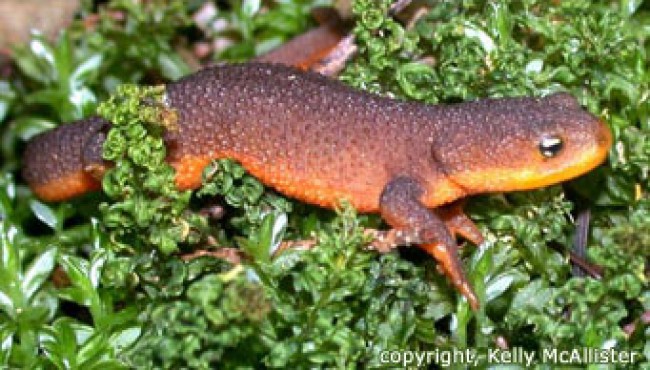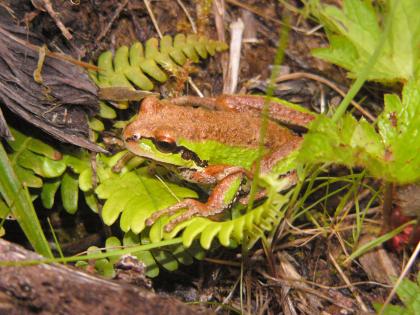WASHINGTON FOREST PROTECTION ASSOCIATION
Amphibian Habitat

DISCOVER WASHINGTON'S DIVERSE AMPHIBIAN POPULATION
Washington State boasts a remarkable variety of amphibian species, with a total of twenty-six amphibians, including salamanders and frogs. Many of these unique creatures are exclusive to the Pacific Northwest region. The key to their survival lies in the delicate balance between land and water habitats. In this pursuit, private foresters, in accordance with the Forests & Fish Law, play a crucial role in preserving the essential ecological functions and valuable habitats required by these amphibians.
Protecting Vital Streamside Habitats
Amphibians are intricately linked to Washington’s streams and rivers. Private forest landowners understand the significance of maintaining buffer zones along these water bodies. These buffers serve a dual purpose: they ensure that stream temperatures remain cool, and they help filter sediment through the riparian vegetation. These efforts are instrumental in safeguarding amphibian habitats.
Columbia Torrent Salamander: A Focus of Scientific Interest
Among the fourteen salamander species found in Washington, the Columbia torrent salamander stands out as an incredible inhabitant of the cold, clean streams of Pacific Northwest forests. This unique salamander species, measuring approximately 3-4 inches from snout to tail, features brown or green coloration on its back and a yellowish underbelly. Its habitat primarily encompasses the marine climate of the Coast Range in Southwestern Washington and Northwestern Oregon, particularly in headwater streams. Notably, the Columbia torrent salamander is currently under consideration for listing under the Endangered Species Act in Washington State. Intensive scientific research is underway to identify and protect areas favorable to this species, both within and beyond the buffer zones.
The Pacific Tree frog
In Washington, the Pacific tree frog reigns as the smallest yet most commonly encountered frog species. These resilient amphibians can be found in various habitats depending on local moisture levels. In wetter regions, you’ll spot the treefrog and red-legged frog, while in drier areas, the spotted frog is more prevalent. To ensure their survival, adult Pacific treefrogs require diverse habitats throughout the year. During the breeding season, which spans from February to July, they inhabit ponds, swamps, and roadside ditches. In other months, they can be found in woodlands, meadows, pastures, and gardens.

Riparian forests are protected in Washington’s managed forests for amphibian life where diverse habitats and conservation efforts come together to protect these remarkable creatures.